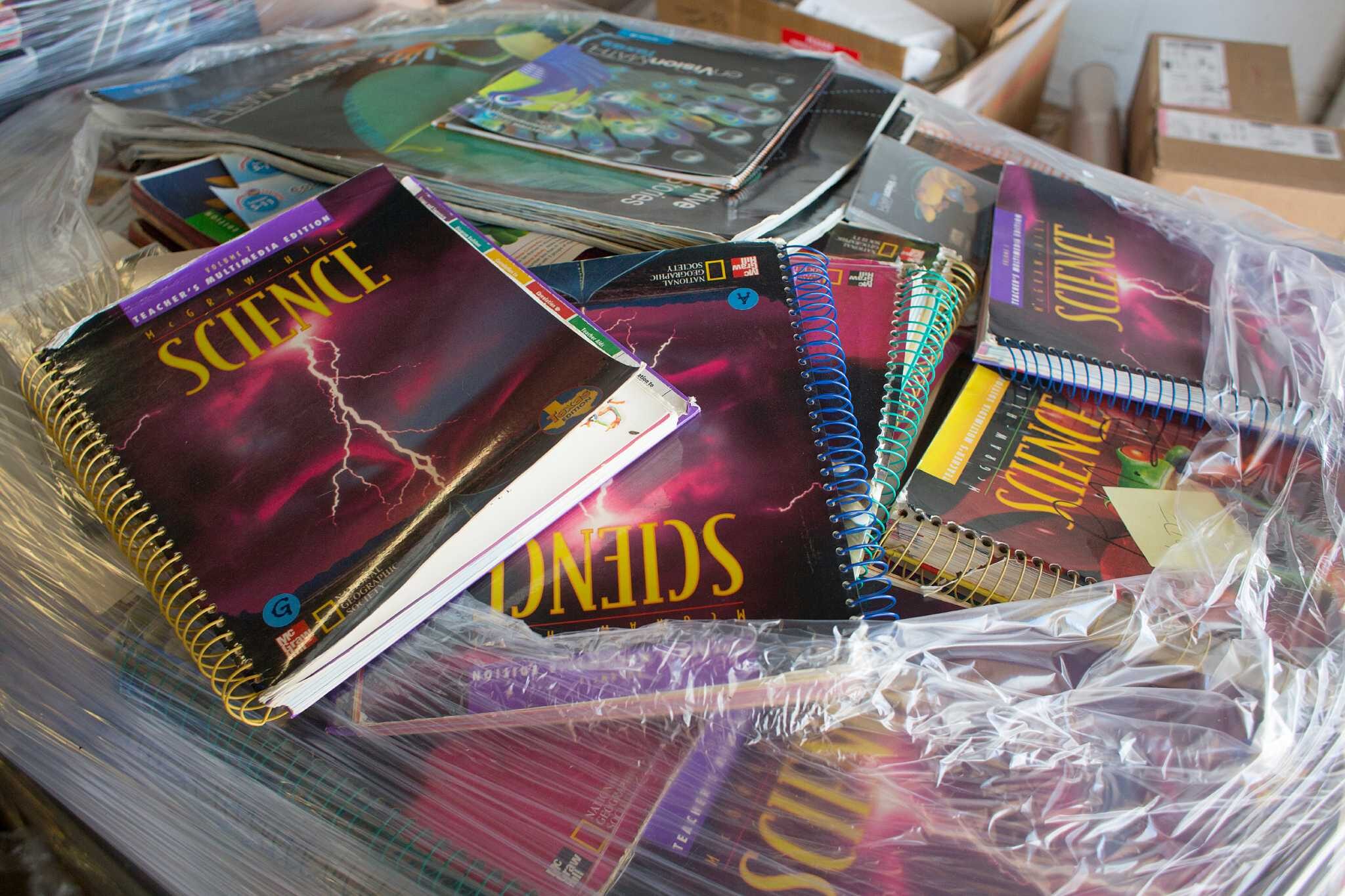SCERT Kerala Textbooks for Class 5 Malayalam
The State Council of Education Research and Training(SCERT Kerala) publishes Malayalam textbooks for Class 5. The SCERT Samagra Kerala Class 5th Malayalam textbooks are well known for it’s updated and thoroughly revised syllabus. The SCERT Kerala Malayalam Books are based on the latest exam pattern and Kerala State syllabus.
SCERT Kerala keeps on updating the Malayalam books with the help of the latest question papers of each year. The Class 5 Malayalam books of SCERT Kerala are very well known for its presentation.
SCERT Kerala Class 5 Malayalam Books are provided in readable form so that students can access it at any time anywhere.
Part AT
Part BT
The State Council of Education Research and Training(SCERT Kerala) publishes Hindi textbooks for Class 5. The SCERT Samagra Kerala Class 5th Hindi textbooks are well known for it’s updated and thoroughly revised syllabus. The SCERT Kerala Hindi Books are based on the latest exam pattern and Kerala State syllabus.
SCERT Kerala keeps on updating the Hindi books with the help of the latest question papers of each year. The Class 5 Hindi books of SCERT Kerala are very well known for its presentation.
SCERT Kerala Class 5 Hindi Books are provided in readable form so that students can access it at any time anywhere.
Part 1
The State Council of Education Research and Training(SCERT Kerala) publishes English textbooks for Class 5. The SCERT Samagra Kerala Class 5th English textbooks are well known for it’s updated and thoroughly revised syllabus. The SCERT Kerala English Books are based on the latest exam pattern and Kerala State syllabus.
SCERT Kerala keeps on updating the English books with the help of the latest question papers of each year. The Class 5 English books of SCERT Kerala are very well known for its presentation.
SCERT Kerala Class 5 English Books are provided in readable form so that students can access it at any time anywhere.
Part 1
Part 2
The State Council of Education Research and Training(SCERT Kerala) publishes Social Science textbooks for Class 5 in English & Malayalam Medium. The SCERT Samagra Kerala Class 5th Social Science textbooks are well known for it’s updated and thoroughly revised syllabus. The SCERT Kerala Social Science Books are based on the latest exam pattern and Kerala State syllabus.
SCERT Kerala keeps on updating the Social Science books with the help of the latest question papers of each year. The Class 5 Social Science books of SCERT Kerala are very well known for its presentation.
SCERT Kerala Class 5 Social Science Books are provided in PDF form so that students can access it at any time anywhere.
Part 1
Part 2
Part 1
Part 2
The State Council of Education Research and Training(SCERT Kerala) publishes Maths textbooks for Class 5 in English & Malayalam Medium. The SCERT Samagra Kerala Class 5th Maths textbooks are well known for it’s updated and thoroughly revised syllabus. The SCERT Kerala Maths Books are based on the latest exam pattern and Kerala State syllabus.
SCERT Kerala keeps on updating the Maths books with the help of the latest question papers of each year. The Class 5 Maths books of SCERT Kerala are very well known for its presentation.
SCERT Kerala Class 5 Maths Books are provided in PDF form so that students can access it at any time anywhere.
Part 1
Part 2
Part 1
Part 2
The State Council of Education Research and Training(SCERT Kerala) publishes Basic Science textbooks for Class 5 in English & Malayalam Medium. The SCERT Samagra Kerala Class 5th Basic Science textbooks are well known for it’s updated and thoroughly revised syllabus. The SCERT Kerala Basic Science Books are based on the latest exam pattern and Kerala State syllabus.
SCERT Kerala keeps on updating the Basic Science books with the help of the latest question papers of each year. The Class 5 Basic Science books of SCERT Kerala are very well known for its presentation.
SCERT Kerala Class 5 Basic Science Books are provided readable form so that students can access it at any time anywhere.
Part 1
Part 2
Part 1
Part 2
Every language has its own collection of knowledgeable sayings. These sayings are called as “idioms”. Idioms and Phrases are an important part of the English language. English is a fascinating and well-written language with full of expressions. Idioms and Phrases are used in written as well as spoken English. In order to excel in English, it is important to know and understand the concept of correct usage of idioms and phrases.
An Idiom is a common word or phrase which signifies otherwise from its literal meaning but can be understood because of its popular usage. A phrase is a small group of words that adds meaning to a sentence. When you learn Idioms and Phrases you sound more confident, especially when you speak with native English speakers. However, learning idioms can be fun and rewarding since their meanings are often surprising.
Idioms are designed based on the human experiences of frequently occurring situations. It is easy to learn and understand Idioms. Idioms are expressions that show human behaviours, reactions on certain things and social habits & traditions. There are thousands of idioms and phrases, occurring frequently in all languages. Let us take a look at some really creative examples of idioms and their subsequent meanings.
The list of commonly used idioms and sayings (in everyday conversational English) can help you speak English by learning English idiomatic expressions. Below given are some of the common Idioms, which we use in our day to day lives:
| Idiom | Meaning |
| A penny for your thoughts | Tell me what you’re thinking |
| A perfect storm | The worst possible situation |
| A penny saved is a penny earned | Money you save today you can spend later |
| Action speak louder than words | Believe what people do and not what they say |
| A little learning is a dangerous thing | People who don’t understand something fully are dangerous |
| A stitch in time saves nine | Fix the problem now because it will get worse later |
| An apple a day keeps the doctor away | Apples are good for you |
| Bolt from the blue | Something that happened without warning |
| Break the ice | Make people feel more comfortable |
| Birds of a feather flock together | People who are alike are often friends |
| Break a leg | Good luck |
| Comparing apples to oranges | Comparing two things that cannot be compared |
| Calm before the storm | Something bad is coming, but right now it’s calm |
| Curiosity killed the cat | Stop asking questions |
| Don’t beat a dead horse | Move on, this subject is over |
| Don’t cry over spilt milk | There’s no reason to complain about something that can’t be fixed |
| Don’t put all your eggs in one basket | What you’re doing is too risky |
| Every cloud has a silver lining | Good things come after bad things |
| Every dog has his day | Everyone gets a chance at least once |
| Fortune favours the bold | Take risks |
| Get your act together | Work better or leave |
| Get out of hand | Get out of control |
| Get a taste of your own medicine | Get treated the way you’ve been treating others |
| Good things come to those who wait | Be patient |
| Hit the nail on the head | Get something exactly right |
| Hang in there | Don’t give up |
| It’s not rocket science | It’s not complicated |
| Ignorance is bliss | You’re better off not knowing |
| Jump on the bandwagon | Follow a trend, do what everyone else is doing |
| Know which way the wind is blowing | Understand the situation |
| Kill two birds with one stone | Get two things done with a single action |
| Look before you leap | Take only calculated risks |
| Let someone off the hook | To not hold someone responsible for something |
| Make a long story short | Tell something briefly |
| Make hay while the sun shines | Take advantage of a good situation |
| No pain, no gain | You have to work for what you want |
| On cloud nine | Very happy |
| Once in a blue moon | Rarely |
| Play devil’s advocate | To argue the opposite, just for the sake of argument |
| Pull someone’s leg | To joke with someone |
| Rain on someone’s parade | To spoil something |
| Run like the wind | Run fast |
| Saving for a rainy day | Saving money for later |
| So far so good | Things are going well so far |
| Take a rain check | Postpone a plan |
| The ball is in your court | It’s your decision |
| Throw caution to the wind | Take a risk |
| Through thick and thin | In good times and in bad times |
| Under the weather | Sick |
| We’ll cross that bridge when we come to it | Let’s not talk about that problem right now |
| We see eye to eye | We agree |
| You can catch more flies with honey than you can with vinegar | You’ll get what you want by being nice |
| You can’t judge a book by its cover | This person or thing may look bad, but it’s good inside |
A phrase is a group of words. Phrases can be short or long, but it does not include the subject-verb pairing necessary to make a clause. A phrase is a group of words that stand together as a single unit, typically as part of a clause or a sentence.
A phrase does not contain a subject and verb and, consequently, cannot convey a complete thought. A phrase contrasts with a clause. A clause does contain a subject and a verb, and it can convey a complete idea. Here are some of the types of Phrases used:
1. Noun Phrases: A noun phrase consists of a noun and all its modifiers.
| S.No | Examples of Noun Phrases |
| 1 | The bewildered tourist was lost |
| 2 | The lost puppy was a wet and stinky dog |
| 3 | The flu clinic had seen many cases of infectious disease |
| 4 | It was a story as old as time |
| 5 | The sports car drove the long and winding road |
| 6 | Saturday became a cool, wet afternoon |
2. Verb Phrases: A verb phrase consists of a verb and all its modifiers.
| S.No | Examples of Verb Phrases |
| 1 | She was waiting for the rain to stop |
| 2 | He was upset when it didn’t boil |
| 3 | You have been sleeping for a long time |
| 4 | You might enjoy a massage |
| 5 | She was eager to eat dinner |
3. Gerund phrases: A gerund phrase is a noun phrase that starts with a gerund.
| S.No | Examples of Gerund Phrases |
| 1 | Strolling along a beach at sunset is romantic |
| 2 | Getting a promotion is exciting |
| 3 | Signing autographs takes time |
| 4 | Going for ice cream is a real treat |
| 5 | Getting a sore back was the result of the golf game |
| 6 | Pulling an all-nighter did not improve his test scores |
| 7 | Sailing into the sunset was the perfect end to the book |
4. Infinitive Phrases: An infinitive phrase is a noun phrase that begins with an infinitive verb.
| S.No | Examples of Infinitive Phrases |
| 1 | To see Niagara Falls is mind-boggling |
| 2 | To make lemonade, you have to start with lemons |
| 3 | I tried to see the stage, but I was too short |
| 4 | He really needs to get his priorities in order |
| 5 | The company decided to reduce hours for everyone |
| 6 | To donate time or money is an honourable thing |
5. Appositive Phrases: An appositive phrase restates and defines a noun. It consists of one or more words.
| S.No | Examples of Appositive Phrases |
| 1 | My favorite pastime, needlepoint, surprises some people |
| 2 | Her horse, an Arabian, was her pride and joy |
| 3 | My wife, the love of my life, is also my best friend |
| 4 | A cheetah, the fastest land animal, can run 70 miles an hour |
| 5 | My idea, a recycling bin for the office, was accepted by the boss |
| 6 | The Florida panther, the state animal of Florida, is an endangered species |
6. Participial Phrases: A participial phrase begins with a past or present participle.
| S.No | Examples of Participial Phrases |
| 1 | I am really excited, considering all the people that will be there |
| 2 | We are looking forward to the movie, having seen the trailer last week |
| 3 | Grinning from ear to ear, she accepted her award |
| 4 | The happy dog ran the entire length of the park, pausing only to sniff the dandelions |
| 5 | Painted a brilliant white, the small room appeared bigger |
Prepositional Phrases: A prepositional phrase begins with a preposition and can act as a noun, an adjective or an adverb.
| S.No | Examples of Prepositional Phrases |
| 1 | We camped by the brook |
| 2 | He was between a rock and a hard place |
| 3 | I waited for a while |
| 4 | She smelled of strawberries and cream |
| 5 | He won the challenge against all odds |
| 6 | She was lost in the dark of night |
Absolute Phrases: An absolute phrase has a subject, but not an action verb, so it cannot stand alone as a complete sentence. It modifies the whole sentence, not just a noun.
| S.No | Examples of Absolute Phrases |
| 1 | The entire team, their uniforms muddy and stained, shouted for joy |
| 2 | His tail between his legs, the dog walked out the door |
| 3 | Picnic basket in hand, she set off for her date |
| 4 | The guys attacked the pile of nachos, their fingers getting the last bit of cheese off the plate |
| 5 | Their heads hanging down, the whole group apologized |
Below given are some of the frequently asked questions on Idioms and Phrases:
Ans: An idiom is a group of words which by common usage has a meaning. An idiom thus has a meaning of its own. A Phrase is a sequence of two or more words arranged in grammatical construction and acting as a unit in a sentence. Every idiom is a phrase. However, each phrase is not an idiom.
Ans: The best way to learn phrases and idioms is to use them in sentences and practical situations.
Ans: These are some of the books which you can refer to:
1. English Idioms in Use Intermediate
2. Oxford Word Skills Advanced Idioms & Phrasal Verbs
3. Work on Your Idioms
As parents, caregivers, educators and moreover as literates we all want our little kids to learn and develop the skills which will help them grow up in a proper way. However, most of us don’t necessarily think of how to develop those skills or at what age we should start encouraging our children to learn how to write.
As far as we know, 21st century’s kids always possess an excitement to learn new things and writing is obviously one of them. So, how are we supposed to teach our toddlers to read and write letters followed by sentences, so that next time, when we take our kids to park, they can see and interpret the words on the welcome board at the entrance, instead of asking “What does that say?”.
Loads of factors involve behind how to teach children to write such as, the ease with which they can hold a pencil or crayon, their enthusiasm to draw or write something etc. At the same time, we should keep this in our mind that, not all kids will learn to write in the same manner and it would need a lot of patience as well. But, when taught in an organized manner, teaching how to write could be fun.
As mentioned earlier, teaching your children to write is not an easy task. It entails lot more rather than just placing a pencil or crayon in their hand and keeping some images in front of them. They need to practice a lot and the good thing is charity always begins at home.
The first thing parents can do to help their children is to develop stronger hand muscle which will help to hold a pencil properly. This can be done by encouraging them to draw and write as much as they can.
Parents can help their children to have a better grip by giving small crayons or pencils in their hands as those will be easy to hold. Place the pencil between the index finger and thumb while resting on the middle finger, this will help the posture.
Children might face some difficulties while writing especially if they cannot hold the paper and pencil properly at the same time. That is why keeping our children in proper posture is very important so that they can extend their wrist and support the pencil properly while writing.
Once they are comfortable to hold a pencil and paper, we can start giving them directions in order to learn writing. Normally, children’s first attempts at writing will be in their preschool years. This is the time when they expand their vocabulary and begin to understand that letters, numbers, and symbols all have meaning. They also start noticing people in their life writing and naturally want to mimic what they see. During this stage, parents will find their young one drawing zigzags and trying to write.
During the preschool age, we may find our children as an enthusiastic artist, wanting to draw random figures everywhere. But in order to teach them how to write takes a lot more than just random shapes. Pro tips on How to teach children to write are given below to make our child master the art. Take a look at them:
Above all, as long as children are not getting proper time and attention from their parents, the learning process might get delayed or might go in vain as well. Therefore, keeping that one thing in mind, the parents of our generation can decide or at least give a direction to their little toddlers to dream, choose and pursue their own future.
Any skill can be inculcated by a child only when the parent nurtures the kid in the right way. Kids are sensitive, so it is the duty of parents to encourage them in all steps of their learning journey. Each child is different from others, do not compare the progress of your child with others and get disappointed at any stage. Make sure you do your part in teaching your child following the tips mentioned above and you will definitely see the result at the earliest.
There are also numerous websites online that will help the child learn alphabets in an interactive manner. You can also refer to the list of strategies article to understand how to improve the reading ability in kids.
We hope you are satisfied with this article on How to teach children to write and if you have any doubts concerning how to teach children to write, feel free to drop a comment in the comment section below.
It is known to all that the secrets of success is focus and determination. But concentrating is difficult when our mind is designed to cope with the surroundings chaos. This distraction causes the mess and ruins your focus.
What is the prime solution against distraction? The first thing is that people think focus means saying yes to those things that you have got to focus on. But that is not what it meant at all. It means saying no to hundred other things that there are. You have to pick very carefully. Deciding what not to do is more important of deciding what to do. It is good to keep in mind that all the causes or situations create distraction are powerless without your reaction.
The environment plays an important role to improve your concentration. Select the comfortable and appealing environments for studying. It is more conducive to attain full concentration.
Don’t allow your mind to take any thought that distracts you. Pay no attention to any unrelated thought that emerge in mind and focus actively on the task you are trying to accomplish.
Make a time -table for scheduled study. Allocate time appropriately to serious tasks. That will help you to be more fulfilled towards playful distractions.
Never allow negative things to change your positive attitude. A negative mind will never give you the positive result. It is always good to think of distinctive footprints. Always avoid retrogressive thinking, imprison negative thoughts, build a strong wall against negativity.
Most of the time multitasking is an illusion. You think you are multi – tasking , but in reality, you are wasting time by switching one button to another. In reality, multi -tasking is not a productivity, it means messing up several things at once.
Every day spent on procrastinating is another day spent worrying about the thing. If we wait until we are ready, we will wait the rest of our lives. Always follow the rule ” Do it now.” Sometimes, later becomes never.
Meditation is not a cure; but, it is a therapy. Practice meditation sincerely and learn to control the mind. You will certainly notice a difference, and it slowly helps to upgrade your concentration power. Meditation can reintroduce yourself to that part that’s been missing.
Always keep perseverance. Perseverance is not a long race, but many short races one after the other. All things are attainable with ordinary talent and extraordinary perseverance.
Crystallize your goals. Make a plan for achieving them and set yourself a deadline. Then with supreme confidence, determination and disregard for obstacles and other people’s criticism, carry out your plan.
Have the courage to follow your heart and intuition. They somehow know what you truly want to become. Allow your goal to become your purpose and it will become your progression.
It is said you can always find a distraction if you are looking for one. Any distraction tends to get in the way of being an effective gangster. Focus comes from elimination distraction. The difference between who you are and who you want to be is what you do. So, stay focused and don’t let the attraction of anything be the distraction.
In this post, you’ll learn eight tips for creating nice handwritten notes with the pen of your choice. Handwriting refers to the style and technique that you use to jot things down day to day. Handwriting needs to be quicker and more practical. While everyone has their own personal handwriting style, there’s always room for improvement! In this post, you’ll find eight tips to help you improve your handwriting.
The adjective “nice” is subjective — you’ll have to hunt to find the pen that works for you. You can find thousands of pens on the market, so we encourage you to shop around. Pick up a pen here and there, and give it a try! It doesn’t matter if you prefer gel pens, fountain pens, ballpoint pens … whatever you connect with the best is perfect.
A nice, relaxed grip is one of the main things that will improve your handwriting. A “relaxed grip” means that none of the muscles in your hand are overly flexed, and your fingernails shouldn’t be white from squeezing the pen’s barrel. Many people tend to clutch the pen, which will result in an achy hand after a few minutes of writing. We often clutch without realizing we’re doing it, so try to mentally check yourself every few minutes to make sure you’re still holding the pen comfortably.
Whether you plan on writing in cursive or print, it can be difficult to form nice letters without warming up. Doing a couple of simple drills will help you to write clear, confident characters. Handwriting drills tend to be simple but mighty, and the more you do them, the more of a difference you’ll notice.
As children, we are generally taught to keep our paper in a vertical position in front of us. If that works for you, great! If not, feel free to experiment with different paper rotations. Keeping the paper at a certain angle can go a long way in helping you to improve your handwriting! Most right-handed people are fine with the traditional vertical paper position. Paper rotation is a personal thing, so we encourage you to try all sorts of different angles. Right-handed people should start at the vertical position, and rotate the paper to the left until writing feels easy and comfortable. Left-handed people should start at the vertical position, and rotate the paper to the right.
If you want a structured way to improve your handwriting, we have made a free worksheet for you! It’s three pages long and focuses on cursive writing — you can download it by clicking here. Basically, the worksheet takes you through drills, capital and lowercase letters, words, and sentences. The cursive writing featured in the worksheet set isn’t any sort of formal style. Instead, it focuses on the letterforms. Those letters are easy to create, and they connect to each other beautifully to make for quick writing.
Just like anything else, you can improve your handwriting with use. The more you write using good habits and implementing styles that appeal to you, the better your handwriting will get. You can get practice through a number of ways — for example, you might send someone a hand-written letter in place of an email or text. If you have the time and interest, you can start writing in a journal every night. Entries don’t have to be long; they can be short accounts of how your day went!
Writing nice, even words are a big shortcut to neat handwriting! If you want to write a letter to someone, you can put a piece of notebook paper under printer paper. More than likely, you’ll be able to see the notebook paper lines through the printer paper, and you can use those lines as guidelines for even writing. Or, if you don’t mind the lines, you can write someone a letter directly on notebook paper.
This point reminds of another tip: always use a “padding” piece of paper. No matter what piece of paper you’re writing on, it should always have another piece of paper under it. For some reason, the slightly cushier surface provided by two pieces of paper makes it easier for all pens to write!
Handwriting is a very fluid, personal thing that is always evolving. No matter how your handwriting looks, it is a wonderful reflection of you and your personality. That’s why people love receiving handwritten notes: they represent a piece of you! So, don’t get too hung up on a radical change: instead, focus on making clearly formed letters that are easy to read.
Hope you enjoyed this post, and that it inspires you to ditch the keyboard and write something by hand this weekend!







